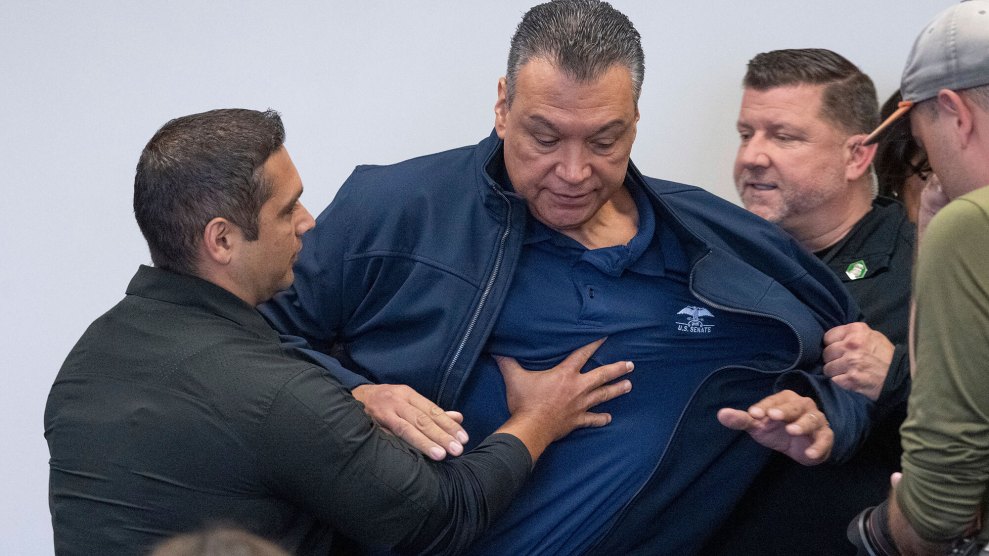USA Today dropped a bomb on the Pentagon this morning, reporting that military officials “repeatedly balked at appeals—from commanders on the battlefield and from the Pentagon’s own staff—to provide the lifesaving Mine Resistant Ambush Protected vehicle, or MRAP, for patrols and combat missions” in Iraq. Rather, to negotiate the country’s IED-riddled thoroughfares, U.S. troops have had to rely on humvees that have been retrofitted with armor (some of makeshift design) and offer little protection from direct blasts. But here’s the kicker: “Even as the Pentagon balked at buying MRAPs for U.S. troops, USA TODAY found that the military pushed to buy them for a different fighting force: the Iraqi army.”
On Dec. 22, 2004 — two weeks after President Bush told families of servicemembers that “we’re doing everything we possibly can to protect your loved ones” — a U.S. Army general solicited ideas for an armored vehicle for the Iraqis. The Army had an “extreme interest” in getting troops better armor, then-brigadier general Roger Nadeau told a subordinate looking at foreign technology, in an e-mail obtained by USA TODAY.
In a follow-up message, Nadeau clarified his request: “What I failed to point out in my first message to you folks is that the US Govt is interested not for US use, but for possible use in fielding assets to the Iraqi military forces.”
In response, Lt. Col. Clay Brown, based in Australia, sent information on two types of MRAPs manufactured overseas. “By all accounts, these are some of the best in the world,” he wrote. “If I were fitting out the Iraqi Army, this is where I’d look (wish we had some!)”
The first contract for what would become the Iraqi Light Armored Vehicle — virtually identical to the MRAPs sought by U.S. forces then and now, and made in the United States by BAE Systems — was issued in May 2006. The vehicles, called Badgers, began arriving in Iraq 90 days later, according to BAE. In September 2006, the Pentagon said it would provide up to 600 more to Iraqi forces. As of this spring, 400 had been delivered.
The rush to equip the Iraqis stood in stark contrast to the Pentagon’s efforts to protect U.S. troops.
In February 2005, two months after Nadeau solicited ideas for better armor for the Iraqis and was told MRAPs were an answer, an urgent-need request for the same type of vehicle came from embattled Marines in Anbar province. The request, signed by then-brigadier general Dennis Hejlik, said the Marines “cannot continue to lose … serious and grave casualties to IEDs … at current rates when a commercial off-the-shelf capability exists to mitigate” them.
Officials at Marine headquarters in Quantico, Va., shelved the request for 1,169 vehicles. Fifteen months passed before a second request reached the Joint Chiefs and was approved. Those vehicles finally began trickling into Anbar in February, two years after the original request.

















